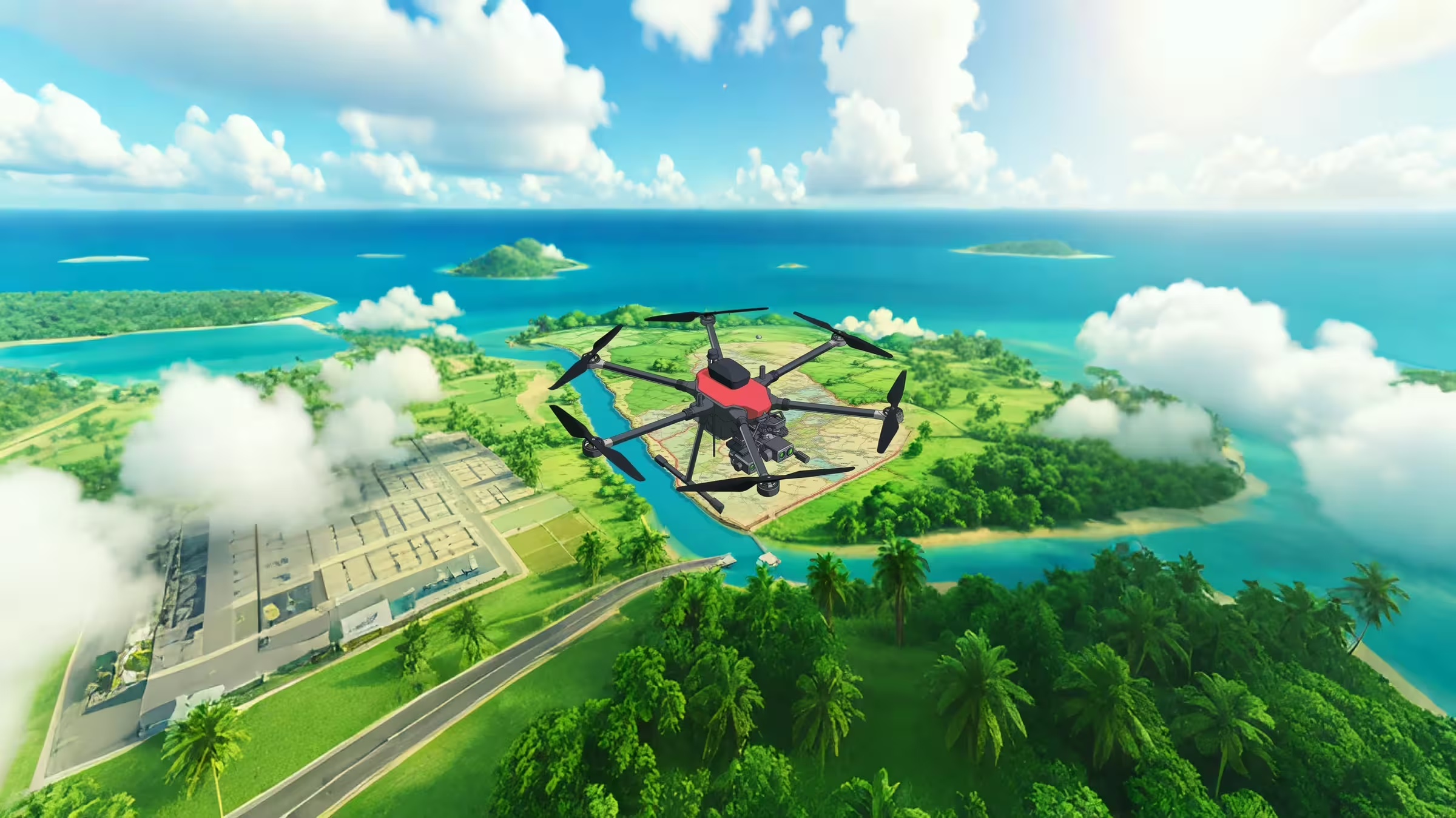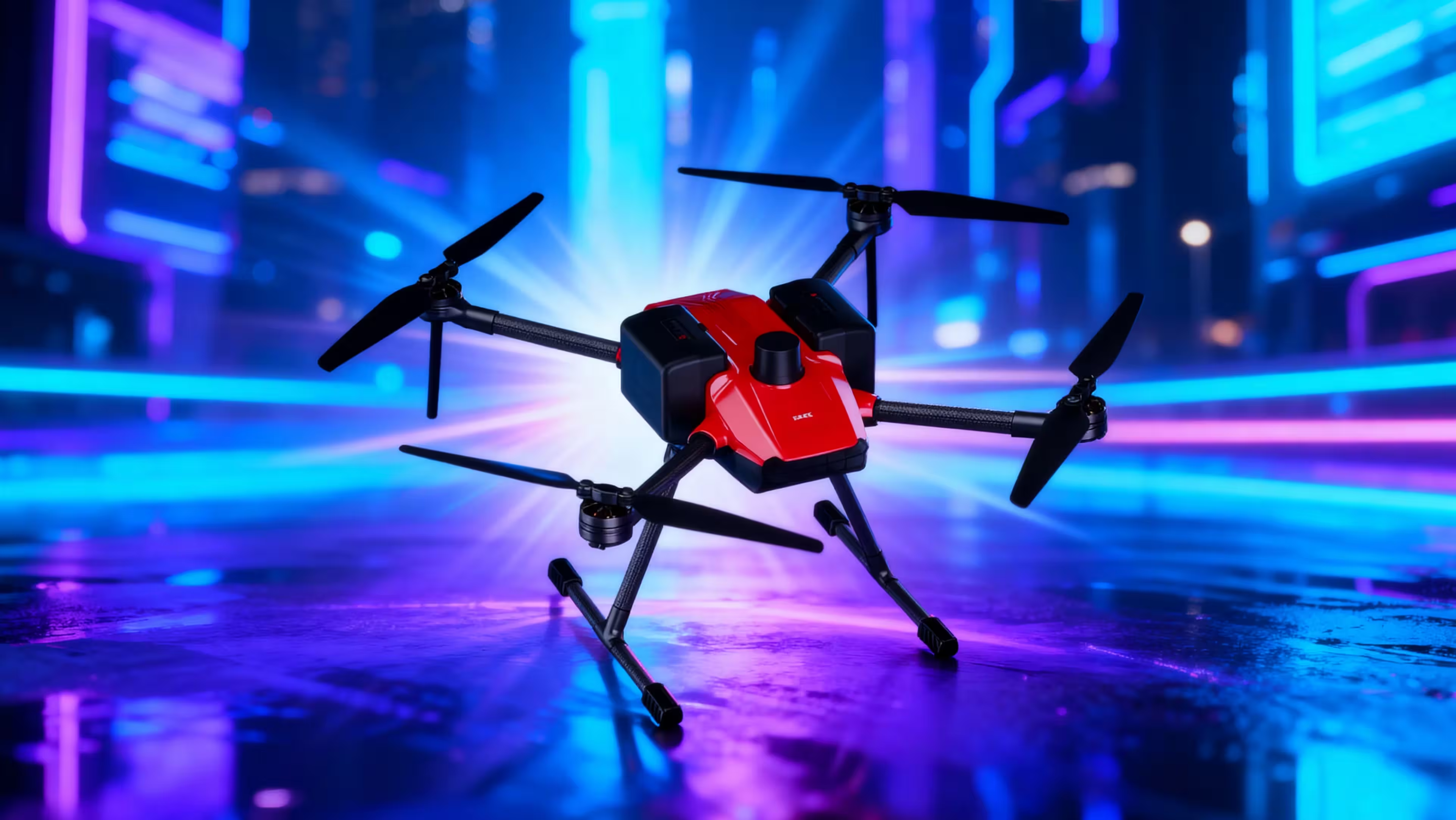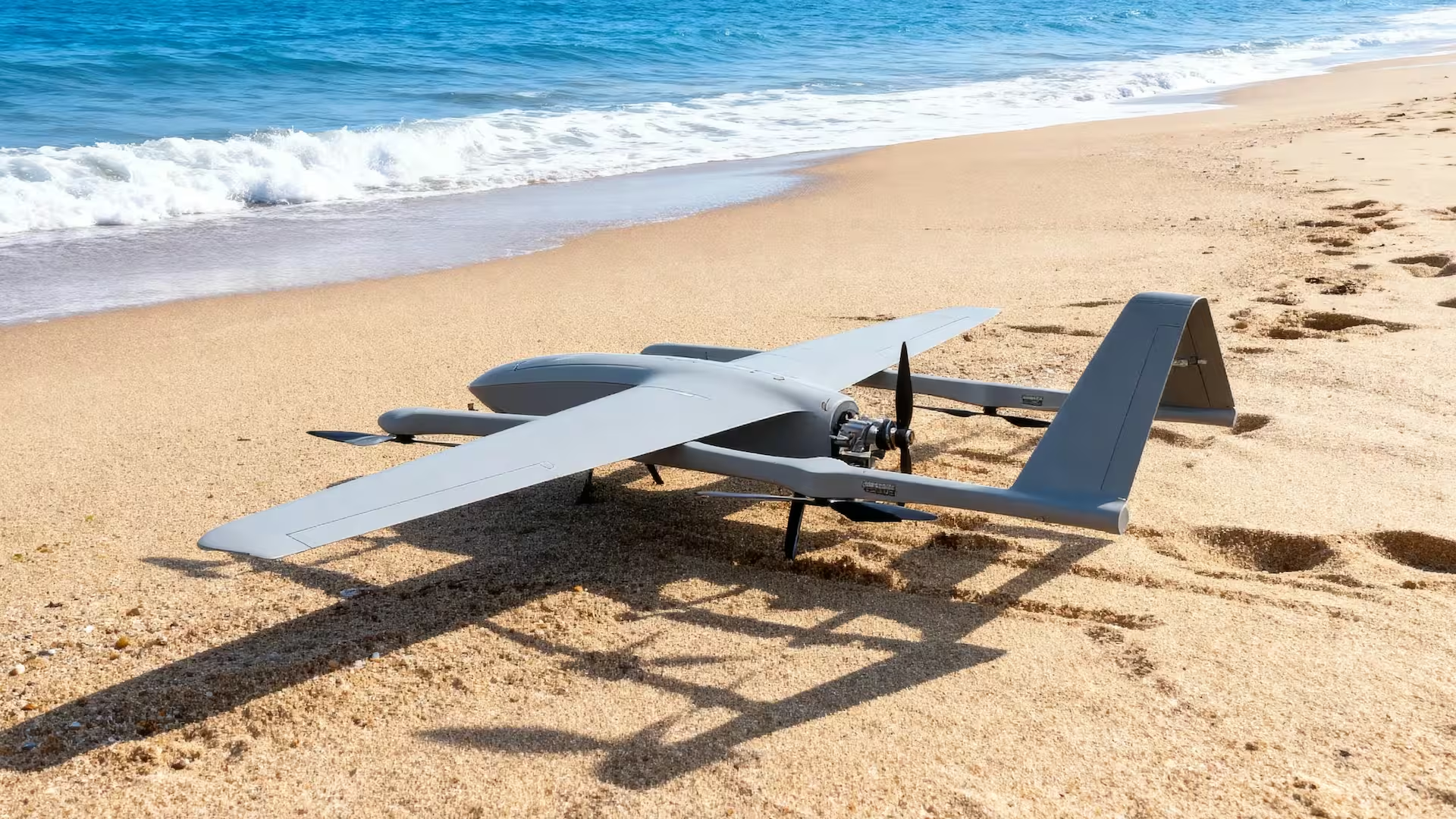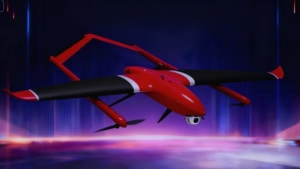I. The Inception of a New Aerial Instrument
There are machines that follow human intention, and there are machines that extend it. The M11H belongs unmistakably to the latter category—not because it is large, nor because it flies farther than the practical expectations of most unmanned aircraft, but because it alters the boundaries that have long constrained aerial logistics, surveillance, and communication.
Engineers often speak in numbers; operators speak in outcomes. Yet somewhere between those languages lies a third voice: the voice of a machine that has learned, through design, how to carry the weight of responsibility without complaint. When the M11H rises vertically from a clearing no larger than a small wooden platform—3 meters by 3 meters—it does so not with drama, but with the steady confidence of an instrument aware of its obligations.
This aircraft is not an experiment. It is a tool for those who face large terrains, large decisions, and large consequences.
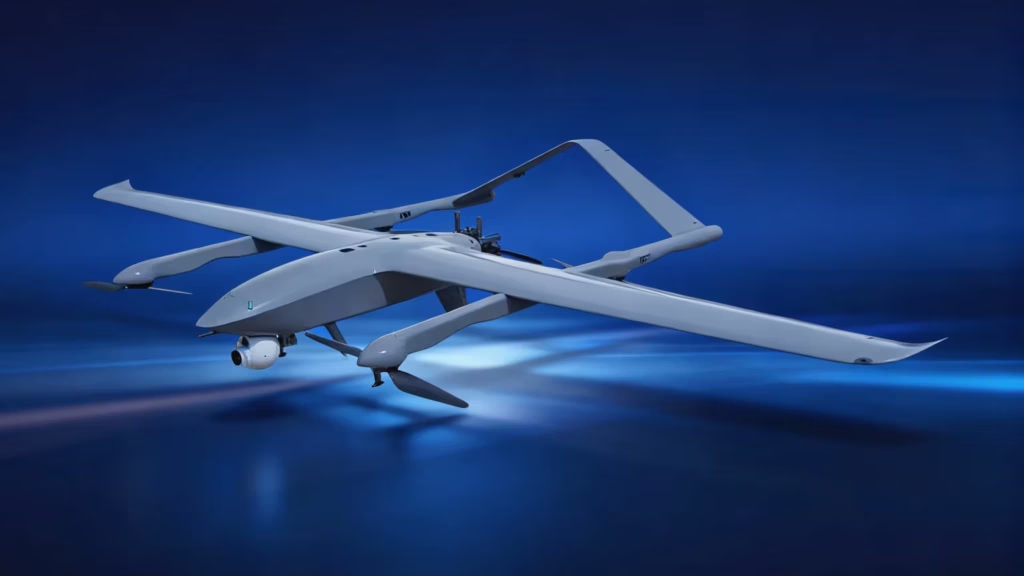
II. A Structure Shaped by Purpose
The body of the M11H is a study in functional grace. The composite shell, forged from carbon fiber and glass fiber, is not sculpted for ornamentation. It is shaped for resilience and composure under duress—attributes that become more pronounced when the aircraft is tasked with a 20-kilogram payload and ventures into a climate swinging from –20°C frost to 60°C desert heat.
The wings—wide, deliberate, and sharply intelligent in their geometry—offer a lift-to-drag ratio optimized for endurance rather than showmanship. With a wingspan of 4.8 meters, the aircraft seems at rest even while slicing cleanly through air at 27 meters per second, a speed chosen not to impress but to sustain.
Attached to this wingspan is a twin-boom structure that serves as the aircraft’s quiet anchor. It is rare for engineering choices to feel inevitable, yet this one does: for an aircraft that must bear weight, remain stable, and hold its posture even in winds reaching Level 7 in fixed-wing mode, the twin boom is not merely advisable—it is fated.
III. The Heart of Two Systems
In an age that often obsesses over pure-electric elegance, the M11H follows a calmer, more pragmatic philosophy. It embraces the hybrid: fuel where endurance demands it, electric power where precision requires it. This is not a compromise but a synthesis, merging energy density with controllability.
A battery suite of four 22000mAh 6s modules provides the necessary authority for vertical ascent and hover. But once airborne, the combustion engine begins its long, patient contribution—driving the M11H across hundreds of kilometers for 6 to 10 hours, a duration that feels more like the operational rhythm of a crewed aircraft than a drone.
Fuel consumption is not a mystery left to guesswork. The aircraft offers real-time fuel status, a feature that may appear small on the surface yet becomes critical during multi-hour missions with no second chances. Operators learn to trust this system as one trusts a compass needle; it is quiet, reliable, and unerring.
Should the engine cease, either by intention or by circumstance, the M11H carries within its design the rare ability to ignite again in midair—an act that feels almost biological in its implications, as if the machine resists the very notion of surrender.
IV. The Intelligence to Fly Alone
Autonomy, in aircraft like this, is not marketing jargon. It is a philosophy of risk reduction.
The M11H takes off vertically without human intervention. It transitions to fixed-wing flight without hesitation. It returns home if its communication link dissolves in static. It follows a preplanned landing path drawn into memory before departure, ready to execute the moment it senses disconnection.
If communication is lost entirely, the aircraft waits precisely 90 seconds—no more, no less—before returning and descending with the same deliberation it exhibited during departure.
These decisions are not dramatic. They are procedural, methodical, correct. They turn what would normally be a failure point into a moment of observed reliability.
V. Modularity as a Form of Respect
The aircraft acknowledges its operators through a design philosophy that respects time, effort, and the inevitability of field conditions. No tools are required for assembly. No workshop is needed. Two individuals, working in rhythm, can move from packed cases to flight readiness in under three minutes.
The payload bay embraces flexibility: single-light pods, dual-light tracking systems, triple-sensor gimbals, and specialized modules all find their place. The quick-release architecture allows teams to reconfigure the aircraft mid-operation without fatigue or hesitation.
This modularity is not a convenience feature; it is a recognition of the unpredictable nature of real missions.
VI. Where the Aircraft Works Best: Stories from the Field
1. Long-Range Infrastructure Patrol
There are infrastructures so vast that they defy human scale: pipelines winding across deserts, power grids stretching across mountains, rail networks that bridge entire nations. Inspecting them is not merely a logistical challenge—it is a strategic necessity.
The M11H, carrying a robust tri-sensor gimbal, can hover for stabilization, then glide for endurance, crossing hundreds of kilometers without needing a landing strip. When anomalies are detected—heat signatures, structural shifts, erosion patterns—operators receive real-time visuals with the stability of a platform that does not tremble even when the wind argues.
A helicopter could perform this task, at ten times the cost. A small electric drone could attempt it, at one-tenth the endurance. The M11H occupies the middle ground—balanced, rational, efficient.
2. Communication Relay in Sparse Territories
Imagine a rescue operation in a mountain basin where radio signals are muted by terrain. Ground teams struggle to coordinate, agencies operate blind, and the clock ticks.
The M11H rises, reaches altitude, and becomes an airborne communication node with an 80-kilometer control radius, establishing a corridor of contact across an otherwise silent landscape. Its endurance enables hours of uninterrupted relay, long enough for teams to execute a full rescue cycle.
What it provides is not flight. It is clarity.
3. Cargo Transport to Regions Without Roads
There are places where roads are luxuries: high-altitude villages, mining sites in the interior, scientific stations on plateaus, disaster-struck regions where infrastructure has collapsed.
The M11H does not negotiate with terrain. It simply ascends vertically, transitions, and delivers up to 20 kilograms of critical material—medicine, instruments, water treatment kits, communication devices—then returns without requiring so much as a meter of cleared runway.
In crisis response, it becomes not a drone, but a lifeline.
4. Maritime and Border Patrol
Seas do not yield easily to inspection. Yet the M11H, with its IP54 weather resistance and long endurance, glides over maritime zones with the patience of a vessel that neither drifts nor tires. Border patrol teams use it to extend their vision in regions where terrain forms natural shadows.
Its dual-flight-mode stability lets it confront coastal winds, hover for focus, then resume fixed-wing movement without losing time.
Visibility is its craft. Persistence is its character.
VII. The Dialogue Between Machine and Environment
Aviation often defines itself against the elements. The M11H, instead, addresses them. In Level 7 winds, it does not fight—it compensates. In freezing mornings and scorching afternoons, it does not protest—it adapts. Its sensors maintain hover accuracy within ±1 meter, even as gusts attempt to impose chaos.
Such behavior is not the result of a single system, but an orchestra of them: flight controller logic, aerodynamic stability from the twin-boom layout, engine output modulation, and inertial corrections working in synchrony.
What emerges is a machine that behaves less like a collection of parts and more like a unified organism.
VIII. The Discipline of Landing Where No Runway Exists
The world is full of places unsuitable for flight operations—dense forests, rocky escarpments, floating platforms, confined urban clearings. The M11H approaches these spaces not with hesitation but with discipline.
Vertical takeoff and landing are executed with precision reminiscent of mathematical proof. The aircraft descends in a controlled column, correcting, measuring, and adjusting until it settles on a space no larger than its own shadow.
Night operations further benefit from its navigation lights—red on the left, green on the right, white on the tail—marking boundaries with quiet confidence.
IX. The Quiet Assurance of Safety Systems
Safety is not a slogan here. It is an architecture:
- Reacquisition logic
- Return-to-home on link loss
- Low-voltage emergency routing
- Flip-over rotor protection
- Real-time engine telemetry
- Midair ignition capability
- Preprogrammed landing pathways
Each is a layer. Together they form a shield around both mission and machine.
X. Transportability and Field Logistics
The aircraft’s two carrying cases, measured precisely to ergonomics and cargo constraints, allow teams to move quickly:
- Fuselage case: 1840 × 1010 × 740 mm
- Wing case: 1840 × 470 × 1110 mm
These cases protect the aircraft from transit fatigue, environmental impacts, and rough handling born of operational urgency.
A machine built for harsh missions must first survive the journey to them.
XI. A Machine Meant for Organizations That Cannot Fail
Enterprises and agencies choose tools not for novelty but for guarantee:
- Utility grids must operate.
- Borders must be secured.
- Communications must remain live.
- Emergencies must be answered.
- Supplies must reach those in need.
The M11H does not offer theatrics. It offers certainty—in flight, in endurance, in behavior, in return. Its hybrid system ensures persistence; its VTOL ability ensures adaptability; its structure ensures durability.
It is, ultimately, a machine for those who work in landscapes too large for doubt.
XII. Conclusion: A Horizon Extended
Machines are often defined by what they can do. The M11H is defined by what it enables others to do: inspect what once seemed unreachable, connect the disconnected, supply the isolated, monitor the vast, and respond to the urgent.
It transforms terrain into accessible territory.
It turns distance into a manageable variable.
It takes the horizon and holds it steady in its hands.
The M11H is not simply a UAV. It is a continuation of the operator’s will—carried aloft for hours at a time, stable under weight, confident against wind, and disciplined in its return.
For those who command it, the sky becomes not an obstacle, but an asset.
